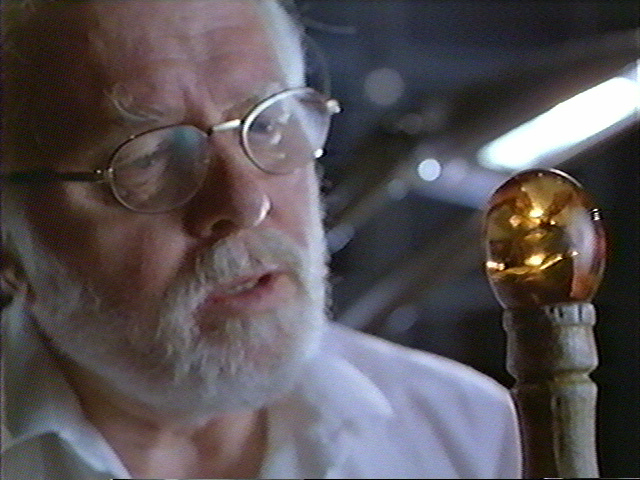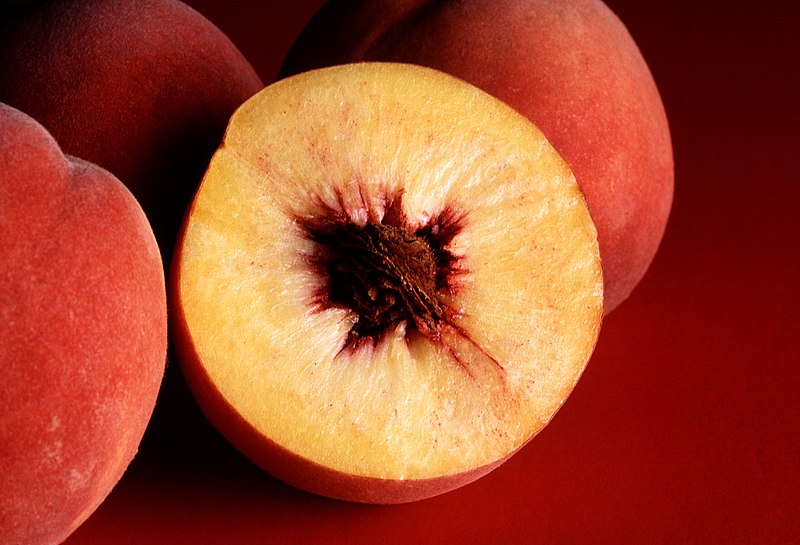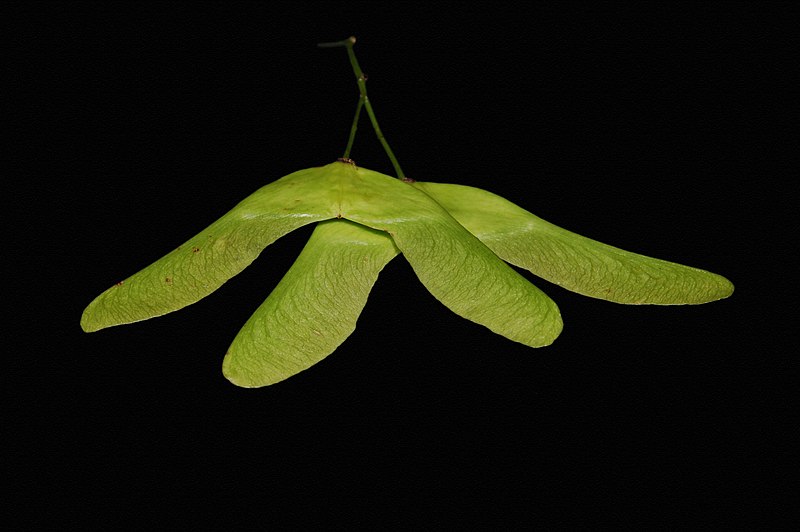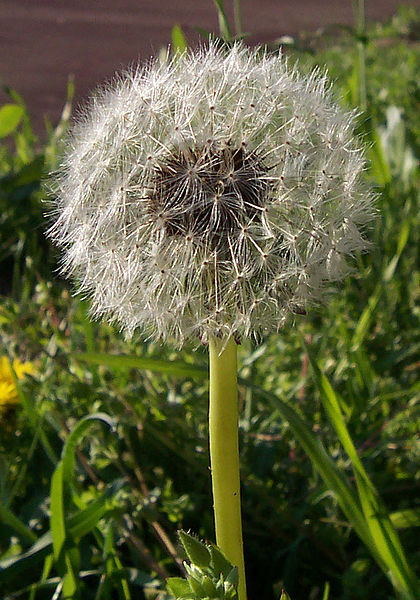 |
| Just look at this beautiful Mosasaurus leaps from the water to snag her prey in Jurassic World. |
Well, since
Jurassic World was just around the corner, I found it only fitting that today's article should focus on an animal that will be appearing in the film: the mosasaur! Specifically, the mosasaur appearing in
Jurassic World is a
Mosasaurus maximus, but I will be talking about several different species of mosasaurs in the article. But first, let's move on to...
Days till:It is: 0 days till
Inside Out's release! It is: 2 days till Father's Day
It is: 15 days till Independence Day
In the Spotlight:Well, since
Jurassic World is already out, I can't talk much about that movie in terms of updates. However, there is one that is rather remarkable:
Jurassic World received the highest box office weekend of all time! That's pretty remarkable! It's great to see that
Jurassic World was so greatly received.
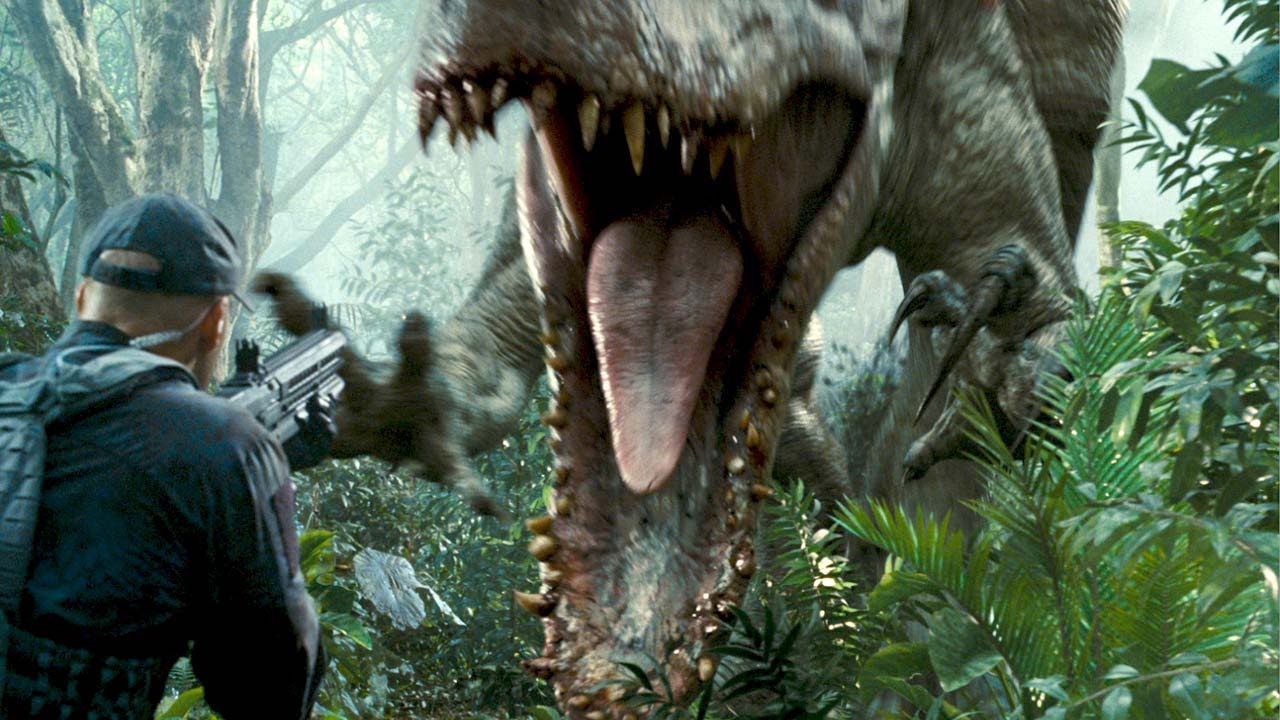 |
| Jurassic World achieved $208.8 million during its first weekend! That's the highest of any movie in just one weekend! |
Thanks to this great turnout, we can now confirm that this is not the last intallment of the
Jurassic Park series! You read that right! In fact, Chris Pratt has already signed on for future installments. This is great news for fans of the franchise, such as myself. To read more about this:
check this out.
In addition to this news,
Inside Out is released in theaters today. Be sure to check it out!
Topic of the Week by
Christian Ryan
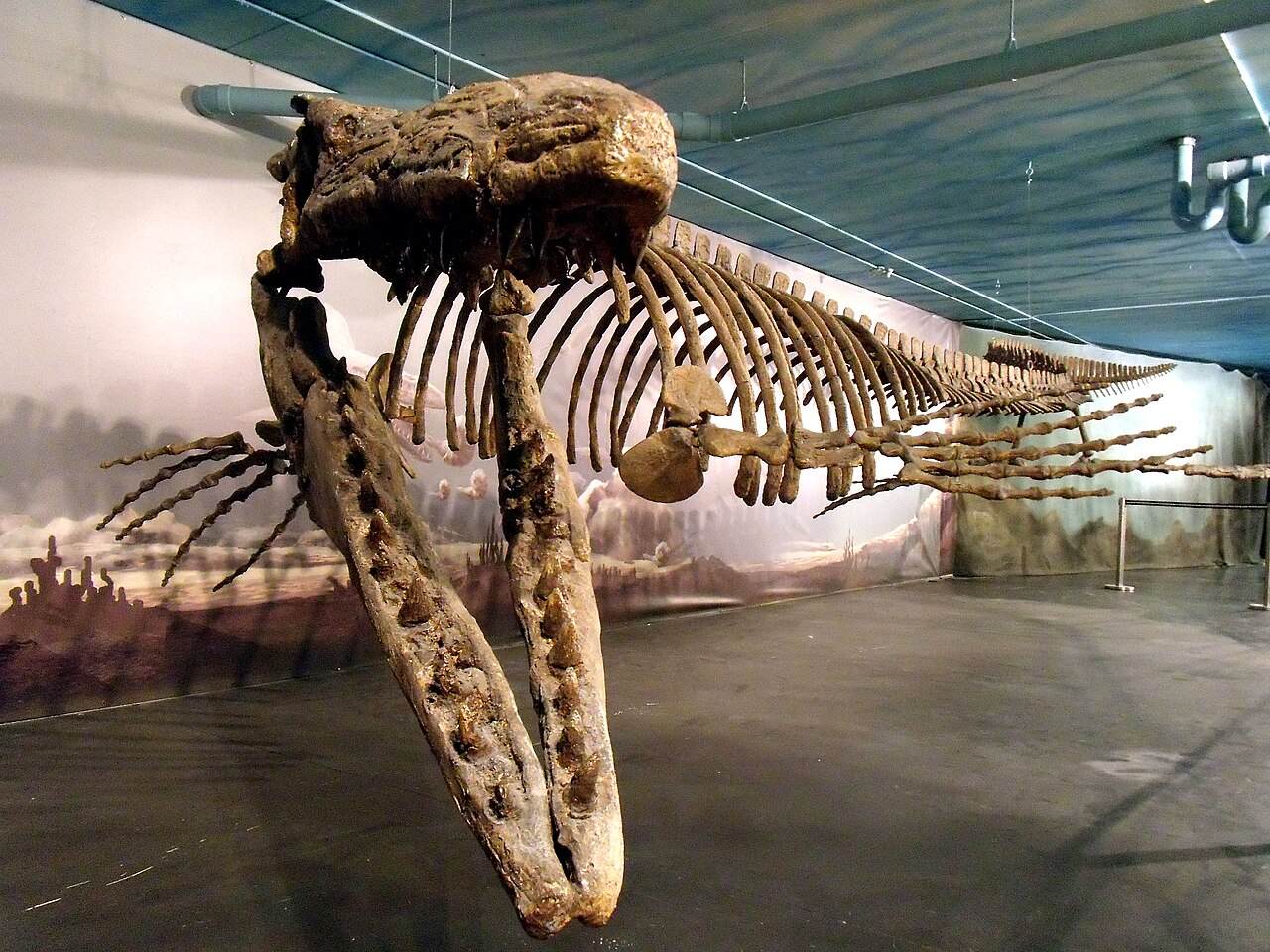 |
| Ancient pre-Flood seaways would have been stalked by large carnivorous reptiles called mosasaurs! |
Jaws, the great white shark, is the reason many feel unsafe about entering the ocean, despite the fact that REAL great white sharks are actually one of the less dangerous species (they only attack humans because they mistake us for their favorite prey or if they are provoked). But there was once a family of predators that roamed the earth's oceans before the Noachian Flood in the book of Genesis; they would have been capable of eating Jaws in one bite. I'm talking about the mosasaurs! These great marine reptiles were not dinosaurs, but they roamed the earth at the same time and were some of the greatest predators ever to stalk the sea. They were true sea monsters.
 |
| Taniwhasaurus was one of many species of mosasaurs. |
Unlike many animals in the fossil record, mosasaur fossils are relatively common and have been found on every continent, including Antarctica. Thanks to fossil discoveries since the 1700's, we've been able to learn a lot about these incredible creatures. Mosasaurs might look like a crocodile hybridized with a shark, but these creatures were actually giant lizards, similar to modern monitor lizards like the Komodo dragon. Unlike the Komodo dragon which God made on Day 6 of the Creation week, 6,000 years ago, mosasaurs were created a day before (Day 5) along with other marine creatures.
Mosasaurs were an aggressive family of ocean-going predators that came in all shapes and sizes. Some, like
Dallasaurus, were only three feet long. Others, such as
Mosasaurus and
Tylosaurus grew in excess of 50-60 feet and weighed up to 20 tons! Talk about a sea monster! Mosasaurs are known for their elongated skulls, filled with sharp teeth. Since they were reptiles, they would have needed to come up to the water's surface to breath. Though they're similar to monitor lizards of today, God would have needed to install several design features to make these animals suited for life in the water. For example, mosasaurs had elongated bodies for swimming with speed. Mosasaurs were once thought to swim using an eel-like undulation, propelling themselves forward with their paddle-like tails. However, recent fossil discoveries have revealed that mosasaurs actually had a tail fluke, similar to a tuna or a shark. This meant that they would have been able to keep its body relatively stiff in the water, using its tail for propolsion. Mosasaurs also had four flippers to use in steering and stabilizing itself. A sharp pair of eyes sat forward-facing on the lizard's face, perfect for finding prey. Scientists also believe mosasaurs had an acute sense of smell for tracking down their prey.
 |
| Mosasaurs such as Platecarpus are now known to have possessed a shark-like tail fluke, enabling them to propel themselves forward with ease. |
The discovery of fossil mosasaurs plays a huge part in the origins of paleontology. The first known discovery of mosasaur fossils occurred in 1764 near the Meuse River in the Netherlands. At a time before dinosaurs were known to science, these fossils were erroneously identified as belonging to a fish or a whale by Martinus van Marum, who studied them in 1790. After this discovery, scientists found more and more mosasaur fossils – enough to conclude they weren't just big fish! Some scientists believed these fossils belonged to some whale or a large crocodile, or perhaps a giant monitor lizard. The reason why no one attributed these fossils to an extinct reptile was because most scientists at the time believed that God never allowed any kind of animal have become extinct, an idea not supported by Scripture. The genius who finally was able to identify the fossils as an extinct reptile was Georges Cuvier. After finally being declared an extinct reptile, it was named “
Mosasaurus”, by William Daniel Conybeare in 1822.
Mosasaurus means “Meuse River Lizard”, in reference to where the first mosasaur fossils were discovered. Since then, the number of mosasaur fossil discoveries have increased and we still are learning a lot about these incredible reptiles.
 |
| Mosasauruswas discovered in 1764 and were thought to be large fish or whales. |
Mosasaurs have been found in upper Cretaceous rock layers that were deposited late during the Genesis Flood. Before the Flood though, they reigned the ocean supreme. Now God didn't create all the different types of mosasaurs on Day 5. Rather, scientific and Biblical evidence suggests that God only created the original baramin, or “created kind” 6,000 years ago. Between this time and the Flood, the other species of mosasaurs descended from the “created kind” through the process of natural selection. This is similar to what we see in the dog and cat family today. Just a few of the many species of mosasaurs include:
Mosasaurus,
Tylosaurus,
Dallasaurus,
Platecarpus,
Globidens, and etc.
 |
| Mosasaurs have been portrayed extremely inaccurately in the past! |
What did mosasaurs eat? Pretty much anything they wanted! How do we know? Well, because they left their bite marks in virtually everything in their domain! We've also found stomach contents inside the guts of these marine reptiles. The diet of mosasaurs varied between the different species based upon their size.
Meter-long
Dallasaurus was, as you might recall, one of the smallest species of mosasaurs. Unlike other mosasaurs, it bore legs rather than flippers. It is likely that it was capable of clambering out onto land; therefore it probably consumed both terrestrial and aquatic prey. It probably ate fish, invertabrates and other small animals.
 |
| Dallasaurus was probably capable of clambering onto land, unlike most mosasaurs. |
Globidens was a medium-sized mosasaur, growing about 20 feet from nose to tail fluke. Most species of mosasaurs had sharp teeth for snatching slippery prey from the water, but not
Globidens! Its teeth were semi-spherical in shape with rounded nubbin-like points, hence the meaning of its name: “globe teeth”. Scientists believed that
Globidens used its teeth to crunch through the tough shells of small sea turtles, clams and squid-like animals called ammonites.
Globidens fossils have been discovered in both North American and Africa.
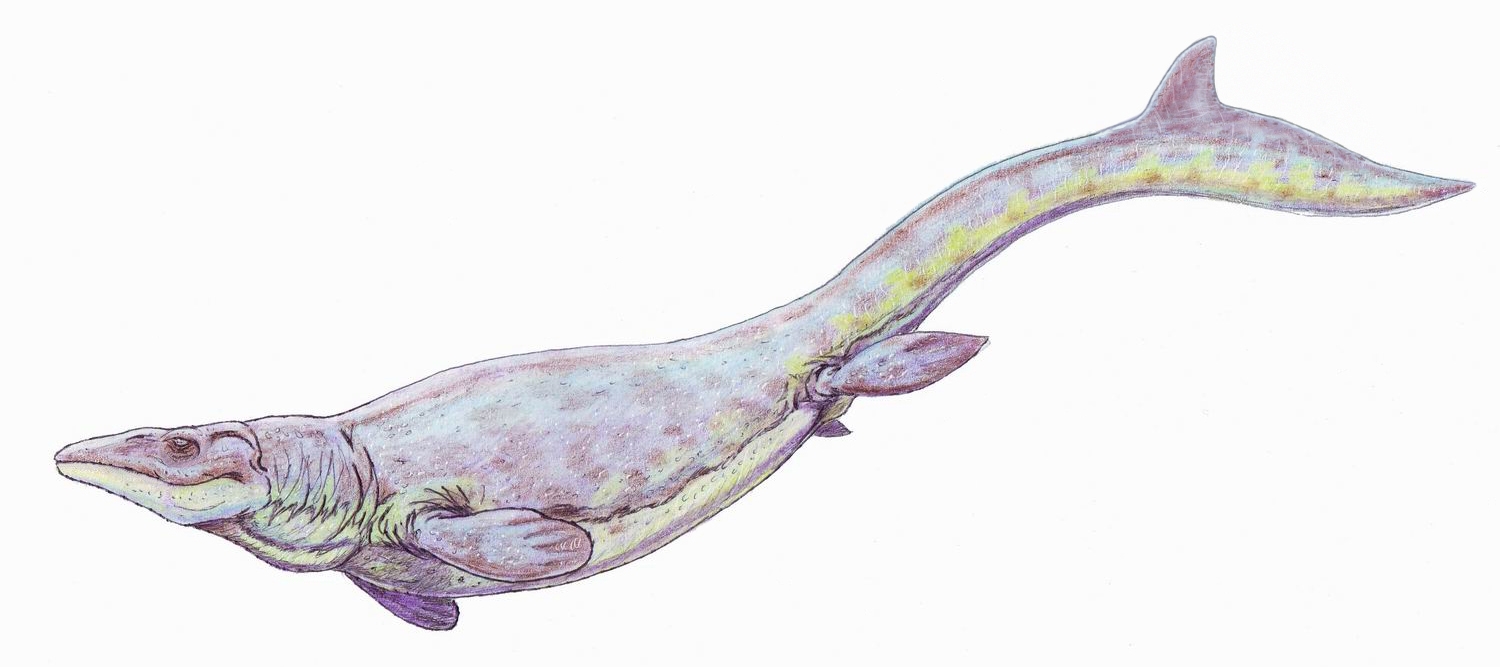 |
| Globidens' diet consisted of sea turtles, clams and ammonites. |
One can't talk about mosasaurs without talking about the really large species, such as
Tylosaurus and
Mosasaurus, the biggest mosasaur of them all. These creatures were massive – both were about 50 feet in length (
Mosasaurus often pushed up to 60 feet) and weighed 15-20 tons in life. The shark Jaws was only 25 feet long by comparison. These predators were fast; scientists estimate that they could swim 30 mph in short bursts. They couldn't keep this speed up for long, so they likely were ambush predators, slowly stalking their prey until the moment of attack. A 2014 study on the newly discovered melanosomes (aka color pigments) preserved associated with mosasaur fossils reveal that some (if not most/all) species of these lizards were dark-colored on the top half of their bodies. This would have made them almost invisible while slowly tracking their prey as they blended in with the dark depths. Prey wouldn't have seen a hungry
Tylosaurus until it was too late!
 |
| Mosasaurus was one of the largest species of mosasaurs, reaching 50-60 feet in length! |
When a large mosasaur –
Tylosaurus or
Mosasaurus – attacked, the prey wouldn't have stood much of a chance. Imagine the colossal beast rushing from the depths, propelled by its powerful tail. Its jaws would open and grab hold of the prey.
Tylosaurus had a five-foot jaw lined with sharp teeth. Its no wonder that this mosasaur and its kin have been nicknamed the “T. rex of the Sea”. As if the teeth lining their jaws weren't enough, mosasaurs also possessed a second set of teeth on the roof of their mouths that could move independent of the rest of the jaw! They would have used this second set of teeth to pull prey further into its mouth. This, combined with their re-curved shape of their serrated teeth, prey could be sure that there was no escape!
 |
| Tylosaurus was an apex predator of the Cretaceous ocean. Its double rows of sharp teeth insured prey did not escape. |
As I mentioned prior to this point, large mosasaurs left their bite marks and teeth embedded in pretty much everything in their environment. A
Tylosaurus skeleton from South Dakota was discovered with the following creatures in its gut: a seabird called
Hesperornis, a bony fish, possibly a shark, and even a smaller mosasaur called
Clidastes. We also have evidence that these large mosasaurs also consumed fish, ammonites, sea turtles, giant squid, long and short-necked marine reptiles called plesiosaurs, sharks the size of Jaws and, of course, other mosasaurs. But mosasaurs didn't only kill each other for food. A
Tylosaurus specimen has been discovered that seems to have had its neck snapped by another
Tylosaurus. Perhaps they were fighting over food, a territory or a mate like modern Komodo dragons do today.
 |
| Tylosaurus consumed virtually everything that moved: sea turtles, fish, squid, plesiosaurs, birds and even other mosasaurs! |
In the dangerous seas mosasaurs lived in, it was important that these creatures reproduce to keep their population in check. Unlike most modern reptiles, we have evidence that mosasaurs gave birth to live young rather than laying eggs (they were unable to crawl out of the water to do so). In 2015, some scientists reported that a collection of fossils from Yale University's fossil collection were misidentified as birds – they were actually the remains of newborn mosasaurs. These fossils seem to suggest that mosasaurs birthed their young live and ready for action out in open ocean.
 |
| Unlike most reptiles, mosasaurs gave birth to live young rather than laying eggs on land, something they would have been unable to do. (PHOTO CREDITS) |
Giving birth to live young in the ocean presents many challenges. Fortunately, God provided mosasaurs with the capabilities to do just that. Unlike marine mammals, the mother mosasaur's eggs would have developed in her body cavity. The eggshells would disintegrate as the babies grew, still nurtured by an egg yolk. Finally, once the young were large and strong enough, the mother would give birth to them. Would the mother mosasaur care for her newborn young ones? It's certainly a possibility, as crocodilians and even several species of lizards engage in similar parental behaviors. We may never know for sure, but the babies would definitely have benefited from their mother's protection from predators of the deep pre-Flood oceans.
 |
| A Mosasaurus snagging a sea turtle in its jaws! |
We find fossilized remains of mosasaurs in Cretaceous deposits dating to the time of the Flood, 4,350 years ago. They had up until that time to be supreme rulers of the pre-Flood ocean. However, it is likely that a relative few of these creatures may have lived through the Flood and continued to survive for sometime after (perhaps the tales of sea serpents ancient sailors told were of their observations of mosasaurs?). Nonetheless, these creatures went into decline, ending their reign. We don't know why the mosasaurs went extinct. Perhaps the climatic changes after the Flood were too much for them, or they were unable to find enough food to sustain them. Whatever the reasons, all we have left to hint at their existence today is their fossilized remains, silent reminders of the wonderful and exciting lives these “Meuse River Lizards” lived!
 |
| Tylosaurus was a true king of the Cretaceous seas! |
References:
www.wikipedia.org/wiki/mosasaurwww.oceansofkansas.com/about-mowww.fossilguy.com/gallery/vert/reptile/mosasaurwww.prehistoric-wildlife.com/species/m/mosasauruswww.wikipedia.org/wiki/mosasauruswww.prehistoric-wildlife.com/species/g/globidenswww.answersingenesis.org/aquatic-animals/sea-monsterswww.wikipedia.org/wiki/tylosauruswww.icr.org/article/8689Disclaimer: Many (or in some cases all) of the photographs and images above are not mine. If you own one or more of them and would like them to be removed, politely let me know via my email address.


